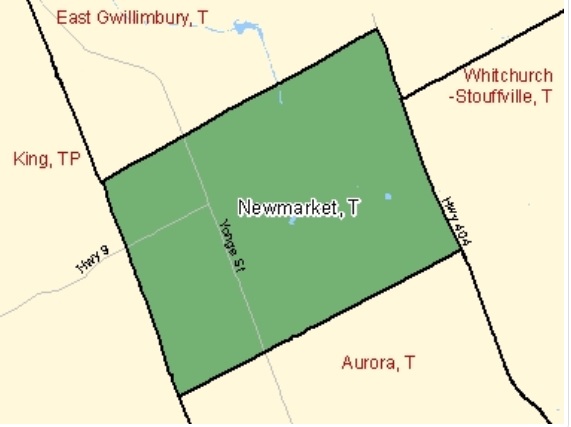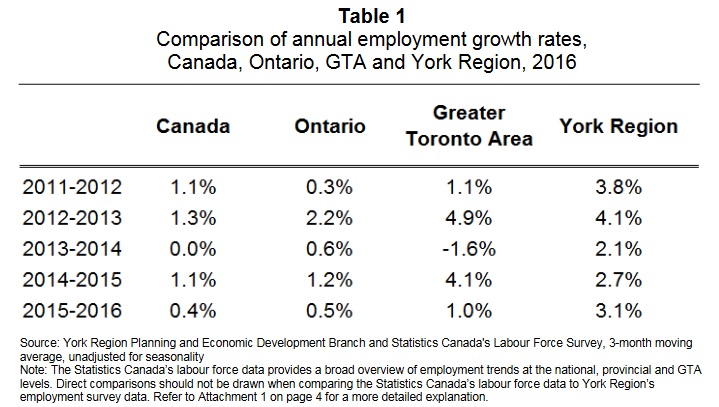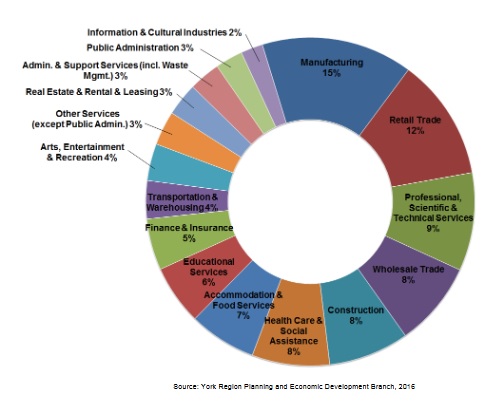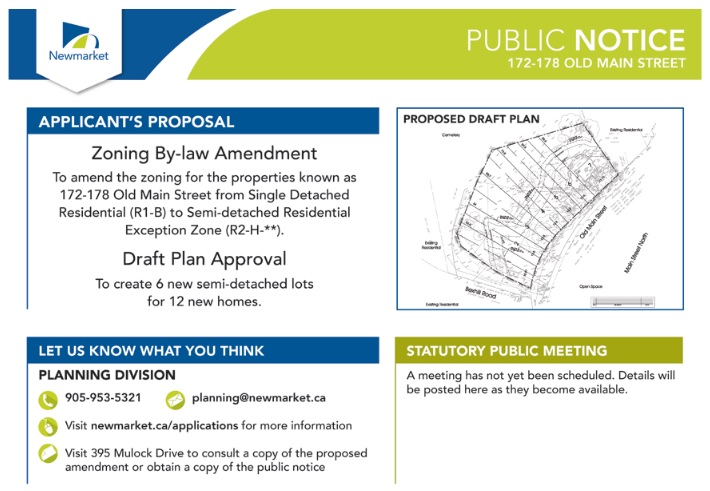- Details
- Written by Gordon Prentice
Yesterday, I sat through the first day of the trial at Newmarket's Small Claims Court. 
Former Newmarket Councillor Maddie Di Muccio is trying to extract $5,000 in damages from John Taylor for defamation and reputational damage.
Her action against Taylor has been dragging on for absolutely ages. She dropped her libel action. Then she amended her claim. It is time to put a line under it and end the circus.
And though she believes Newmarket Council has become
"a cesspool of failed Provincial candidates"
she should now move on with her life. She has tried twice for the Progressive Conservative nomination for the Provincial Parliament and both attempts have ended in bitterness and acrimony. There is not going to be a third time.
Queen's Park is not for her.
I can tell her now, having heard the evidence in its entirety, she will fail. No doubt about it. If she wants to save herself more mental suffering she should gracefully bow out and call it a day.
For those with the stamina to read more about Maddie Di Muccio, my blog on the trial is here. The background documents are here.
This email address is being protected from spambots. You need JavaScript enabled to view it.
Update on Sunday 12 February 2017. Since posting this blog, I've come to realise just how difficult it is to locate the ad which Di Muccio placed in the Newmarket Era on April 10, 2014, using taxpayers' dollars. It is at the centre of the defamation action brought by Di Muccio against John Taylor.
The ad seems to have vanished completely from the internet. However, you can view it here in the bundle of documents submitted by John Taylor to the Court. (Open Di Muccio v Taylor, second from the top and scroll to page 36.)
Is this advertisement a proper use of public funds?
The York Region Taxpayers Coalition presumably thinks so.
- Details
- Written by Gordon Prentice
The first batch of data from last year's census is published this morning. The statistics focus on population growth and housing.
And what does it tell us about our Town? 
The population of Newmarket is now 84,224 - up from 79,978 in 2011.
This is an increase of 5.3%, just higher than the national average of 5%.
By contrast, Aurora's population increased by 4.2%
Newmarket's percentage growth slows
Between 2006 and 2011 Newmarket's population grew by 7.6%, well above the national average growth of 5.9%.
The total "private dwellings" is 29,315. (Statistics Canada defines these as a separate set of living quarters where you don't have to pass through someone else's living space to get to your own.)
Private dwellings occupied by usual residents 28,673 - up from 27,409 in 2011. (A "private dwelling" is where a person/s permanently resides.)
Population density per sq kilometre is 2,190 compared with 3.9 for Canada as a whole.
And we are all squeezed into 38.45 square kilometres.
Whitchurch-Stouffville: the town on steroids
The population of Whitchurch-Stouffville grew by a whopping 21.8% between 2011 and 2016.
Our immediate neighbour to the north, East Gwillimbury, grew by 6.8% between 2011 and 2016 but future population growth is going to be turbocharged.
This email address is being protected from spambots. You need JavaScript enabled to view it.
- Details
- Written by Gordon Prentice
On Thursday (9 February) members of York Regional Council will get a presentation on employment growth across the Region with updates on how industry and businesses are faring. 
We are told York Region employment growth
"outpaced national and provincial labour force growth between mid-year 2015 and mid-year 2016, growing 3.1%."
This is good.
We learn that overall
"There were an estimated 595,200 jobs in York Region as of mid-year 2016 with employment increasing by 15,100 from the previous year. Employment growth continues to outpace national and provincial averages. Full time employment represents 71% of all jobs in the Region, a decline from 73% in 2015."
But all information which is specific to the nine constituent municipalities has been stripped out of the report, making comparisons between, say, Newmarket and Aurora impossible. The last time the information was included (in the 2014 Report) there was a great kerfuffle with Newmarket's Tony Van Trappist speaking out (unusually) and crying foul!
Information is available - but only if you ask
Employment information by municipality comes from surveys carried out across the region. But this information is only made available to elected officials and to municipal staff and not to the great unwashed - unless we make a big song and dance about it.
Why not be up front with the data? It is a bit like having an economic survey of Canada without referring to the Provinces by name, with no comparisons allowed. 
Paul Bottomley, the Region's Manager of Policy, Research and Forecasting, told Council members this time last year the details for the individual nine municipalities did not form part of his presentation.
He said council members had been given the information separately in a handout.
As it happened, I was physically present at the Committee meeting. I intercepted him as he was leaving the Council Chamber and asked for sight of these documents. (Scroll to bottom of page and open.)
I asked if these were "public documents". He conceded they were. He emailed them on to me an hour later.
But why do we have to ask?

Open Data
York Region and Newmarket trumpet the fact they are Open Data authorities.
So why can't the data for the nine constituent municipalities be attached to the main report as an appendix?
People are interested in this kind of stuff.
Is it to avoid embarrassing under-performing municipalities? Is the local data seen as a distraction from the main point?
What is the reason for keeping this stuff under wraps?
The pie chart (above) gives details of job distribution by category across the Region. But why can't we have pie charts for each of the nine municipalities?
Of course, when publishing data there are always the caveats. You've gotta compare like with like. No point comparing muscular Markham with, say, rural King.
But surely we can we compare Newmarket with, say, Aurora, our nearest neighbour to the south.
They are almost part of the family.
This email address is being protected from spambots. You need JavaScript enabled to view it.
- Details
- Written by Gordon Prentice
The Town's Planning Department is reviewing the way it deals with development applications to encourage greater participation and engagement by the public.
This initiative comes not a moment too soon.
For too long, developers have had the whip hand. They have deep pockets and instant access to fancy-dancing lawyers, planners and other sundry experts ready to do their bidding for a fat fee.
And they have time on their side. They know that public discontent can flare up over a development proposal and after a few months - or even years - fade away as people get on with their lives and come to terms with the new reality.
Difficult to navigate
For the public, the planning system is notoriously difficult to navigate.
There is the jargon and the suffocating planning mumbo jumbo. And everywhere there are the "experts" attempting to elevate planning into a science - which it is not. There is, of course, a body of knowledge which planners and planning lawyers have to master but this should not be used as an excuse to exclude the rest of us from participating meaningfully in decisions which profoundly affect our streets, neighbourhoods and towns.
The entire planning process needs to be demystified to make it understandable and accessible.
So I welcome the initiative taken by the Town's Planning Department to give the public earlier notice of pending development proposals.
Legalese and planning babble
Last year, the Town moved away from public notices as slabs of text written in planning babble and legalese. We now  have images. That is a huge step forward. But the Town needs to go beyond plans and elevations. We need an artist's impression (to use a quaint old term) of a proposed development which places it in its immediate surroundings.
have images. That is a huge step forward. But the Town needs to go beyond plans and elevations. We need an artist's impression (to use a quaint old term) of a proposed development which places it in its immediate surroundings.
To fully understand how a new development might fit in, we need perspective which can come from our old friend the artist or, these days, more likely from 3D models or computer generated graphics.
When Ron Eibel unveiled his memorable polystyrene model of Bob Forrest's monstrous Clock Tower development it told us more in an instant than a thousand pages of text ever could.
Speeding up the process
The Town also wants to speed up development application processing and this, too, is good.
The Planning Information Report, published last week, tells us:
"Official Plan and Zoning By-law amendments address matters of land use (what type of activity), density (how much floor area), built form (height, layout, setbacks), and compatibility (buffering, protection of sensitive lands, etc). Site plan applications address how a property is laid out to ensure functionality and compatibility including landscaping, traffic and pedestrian movement, grading and servicing."
The Town now wants to deal with Official Plan and Zoning By-law amendments and Site Plan issues concurrently.
This new procedure is to be piloted at 514 Davis Drive - the site of a proposed five storey office building.
Meetings with developers
Quite separately - and on another issue entirely - we need to be told when developers have one-to-one meetings with the Mayor and Councillors and a record should kept of what was said. This seems to have disappeared from the radar.
Elected officials are, of course, free to meet developers. But when they do the rest of us should be told about it.
This email address is being protected from spambots. You need JavaScript enabled to view it.
- Details
- Written by Gordon Prentice
As a dual national, I have now signed two petitions about Donald Trump.
The first calls on the UK Government to withdraw the invitation to President Trump to make a State Visit on the grounds that it would embarrass the Queen.
But who really knows if the Queen would feel comfortable travelling with the great man in the very confined space of the State Coach? 
If she were nervous she wouldn't let on.
Anyway, I am one of 1,843,622 who signed this petition and I am left with a warm glow. The petition will be debated in the UK House of Commons on 20 February 2017.
Donald Trump should be allowed to enter the UK in his capacity as head of the US Government, but he should not be invited to make an official State Visit because it would cause embarrassment to Her Majesty the Queen.
Donald Trump's well documented misogyny and vulgarity disqualifies him from being received by Her Majesty the Queen or the Prince of Wales. Therefore during the term of his presidency Donald Trump should not be invited to the United Kingdom for an official State Visit.
Astonishingly, people who sign the petition get a transcript of the debate emailed to them together with a video link.
Emboldened, I have now called on the Government of Canada to go one step further and to ban Trump from coming here until he re-thinks his recent controversial Executive Order which identifies everyone from seven named countries as being a potential security risk. Curiously, Saudi Arabia, where most of the 9/11 terrorists hailed from, doesn't make Trump's list.
We, the undersigned, citizens of Canada, call upon the Government of Canada to prohibit President Donald Trump from entering Canada until he withdraws his Executive Order that prohibits travel from Sudan, Syria, Libya, Iran, Iraq, Somalia and Yemen because it violates human or international rights.
This petition has only been up and running for a few days and has attracted 3,021 signatures. It can only grow.
Conrad Black: Trump's Apologist
Postscript: I see that Conrad Black, a great fan of Donald Trump, is mocking Barbra Streisand, Jon Stewart, Cher and other famous names
"who promised to emigrate if Trump were elected, and most promised to come to Canada... but they seem not to be moving."
Which begs the question: why is Conrad Black still in Canada? He voluntarily renounced his Canadian citizenship in 2001 to  become a member of the House of Lords in the UK. And after serving a prison sentence in the United States he was, exceptionally, allowed leave to remain in Canada on a one year temporary residence permit until May 2013.
become a member of the House of Lords in the UK. And after serving a prison sentence in the United States he was, exceptionally, allowed leave to remain in Canada on a one year temporary residence permit until May 2013.
And yet he is still here.
He was stripped of his Order of Canada in January 2014 and expelled from the Privy Council the same day.
When I raised the matter with my MP, Kyle Peterson, in March 2016 I was told there were privacy considerations and his hands were effectively tied.
So, I don't know what Black's immigration status is but I know he spends a lot of time pontificating about the immigration status of others.
If I may paraphrase the famous fraudster who spent 37 months in a US prison:
He's here, I suppose, and he seems not to be moving.
This email address is being protected from spambots. You need JavaScript enabled to view it.
Page 181 of 286